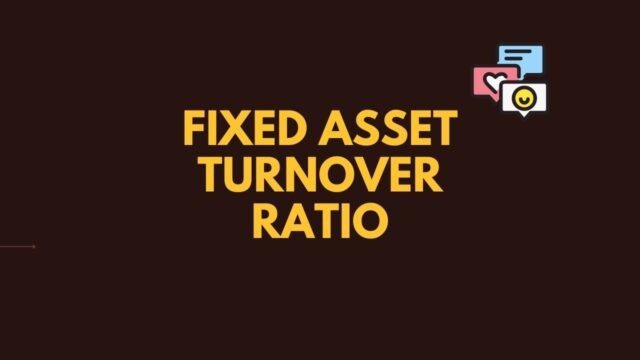
What is the Fixed Asset Turnover Ratio
The Fixed Asset Turnover Ratio is a financial ratio that measures a company’s efficiency in using its fixed assets to generate sales. The fixed assets include both long-term and short-term assets, such as property, plant, and equipment. To calculate the ratio, divide the company’s net sales by its average fixed assets. A high ratio indicates that the company is generate a lot of sales with few assets, while a low ratio indicates that the company is not using its assets efficiently. The Fixed Asset Turnover Ratio is just one of many financial ratios that can be used to evaluate a company’s financial health. However, it is an important tool for investors and analysts to use when considering whether or not to invest in a company.
How to calculate the Fixed Asset Turnover Ratio
This ratio is calculated by dividing the company’s sales by its total fixed assets. A high fixed asset turnover ratio indicates that the company is using its fixed assets efficiently and is generating a lot of sales from them. A low fixed asset turnover ratio indicates that the company is not using its fixed assets efficiently and could be generate more sales if it did. The ideal FATR varies from industry to industry, so it is important to compare a company’s ratio to its competitors. The fixed asset turnover ratio is a good way to measure a company’s overall efficiency and profitability.
Uses and interpretation of the Fixed Asset Turnover Ratio
There are a few different ways to interpret the FATR. A high FATR may be indicative of strong demand for the company’s products or services. It may also indicate that the company has invested wisely in efficient and productive fixed assets. On the other hand, a low FATR may indicate that the company is over-reliant on debt financing or that it has made poor investments in fixed assets.
Ultimately, the interpretation of the FATR will depend on the specific circumstances of the company in question. Financial analysts will often compare a company’s FATR to those of its competitors in order to get a better sense of how efficient it is relative to others in its industry. They will also take into account other factors, such as the overall profitability of the company, before drawing any conclusions about its financial health.
Limitations of the Fixed Asset Turnover Ratio
While the FATR is a useful tool for evaluating a company’s performance, it has several limitations. First, the ratio does not take into account the time value of money. This means that a company with high sales but low fixed asset values may appear to be more efficient than a company with low sales but high fixed asset values. Second, the ratio does not consider the depreciation of assets.
This means that a company with newer assets may appear to be more efficient than a company with older assets. Finally, the ratio does not take into account the size of the company. This means that a small company with high sales and low fixed assets may appear to be more efficient than a large company with low sales and high fixed assets. Despite these limitations, the fixed asset turnover ratio remains a valuable tool for financial analysis.
Comparisons with other ratios
The Fixed Asset Turnover Ratio can be compared to other financial ratios, such as the Inventory Turnover Ratio and the Accounts Receivable Turnover Ratio, to get a more complete picture of a company’s overall efficiency. The FATR is also sometimes compared to the Total Asset Turnover Ratio, which measures a company’s efficiency in using all of its assets (including both Fixed Assets and current assets) to generate revenue.
Looking at the FATS in isolation can provide useful information, but comparisons with other ratios can give even more insights into a company’s financial performance.
How to improve the Fixed Asset Turnover Ratio
There are a number of ways to improve the FATR, including:
- Reducing the amount of Fixed Assets on the balance sheet. This can be accomplished by selling off unneeded assets or by leasing rather than owning assets.
- Increasing sales without increasing Fixed Assets. This can be achieved through marketing and sales initiatives or by expanding into new markets.
- Reducing the depreciation expense for Fixed Assets. This can be done by lengthening the depreciation schedule or by using accelerated depreciation methods.
All of these options will result in an increase in the FATR, making the company more efficient in its use of Fixed Assets.


































